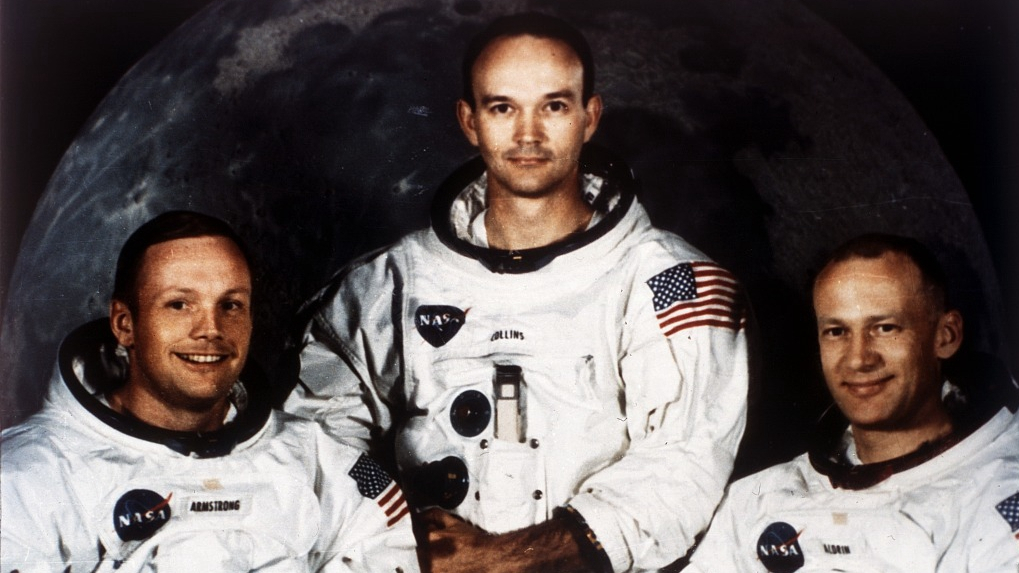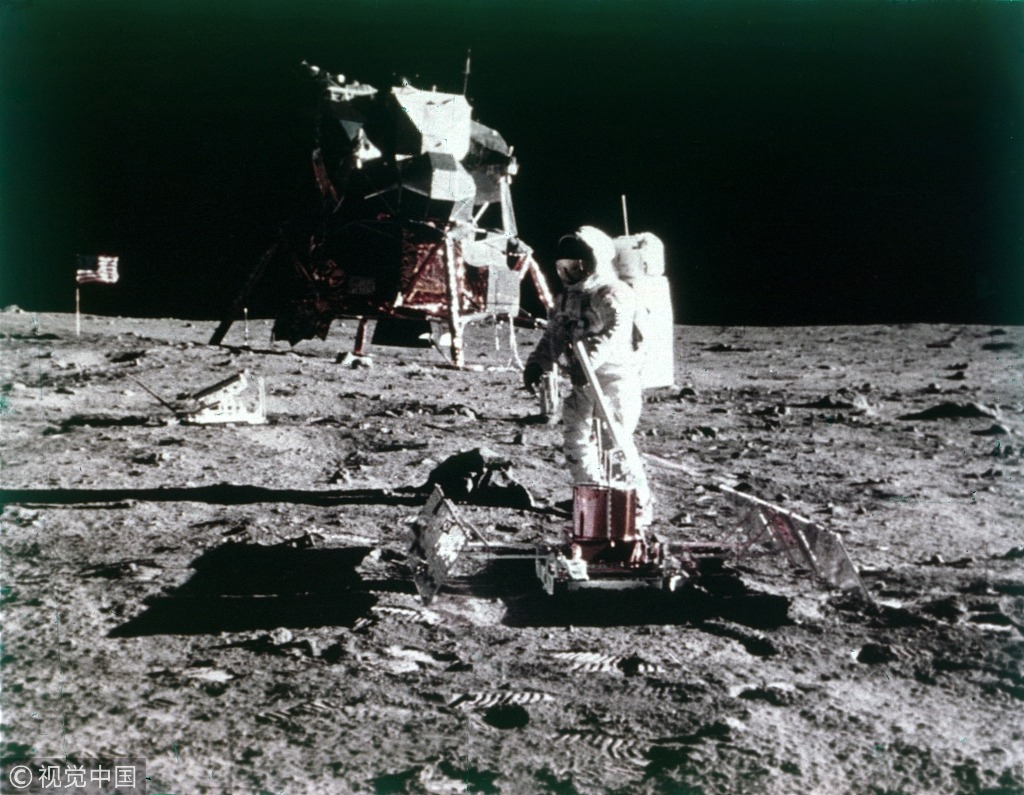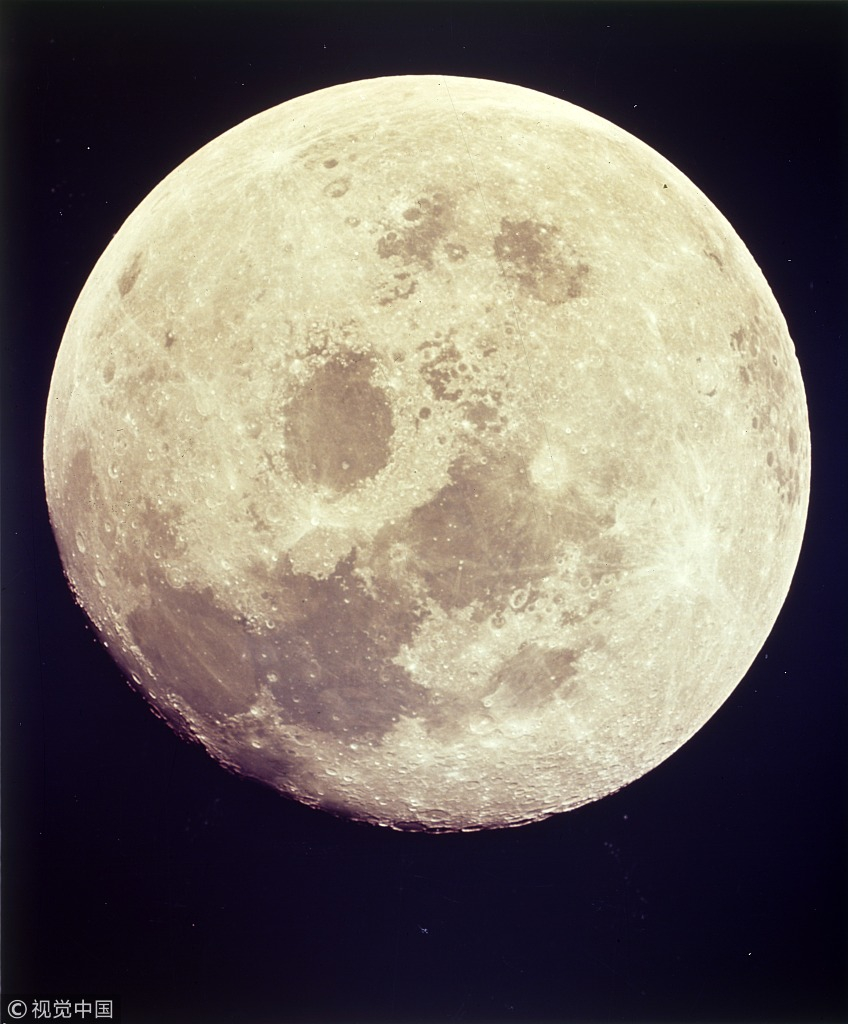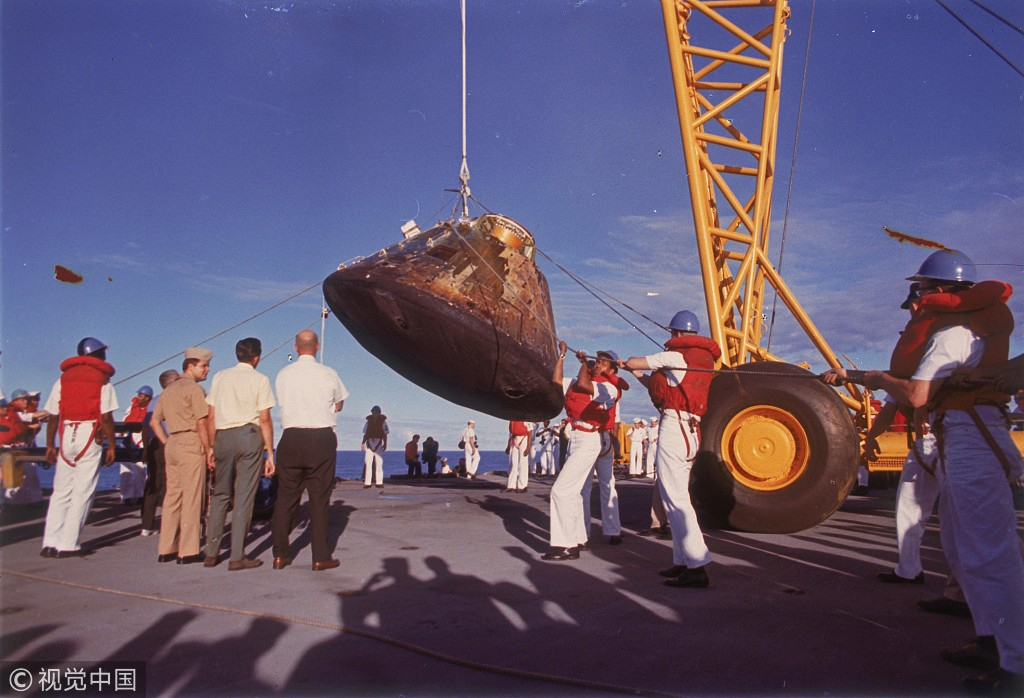
Movie/TV
14:45, 11-Mar-2019
How a vintage film format brought 'Apollo 11' back to life
CGTN

New documentary "Apollo 11," which tells the story of mankind's first steps on the Moon, contains footage so striking that it seems practically a crime that it remained hidden for nearly five decades.
The film, which premiered at Sundance in January but only hit US theaters this weekend, injects new life into the most famous space mission of all time, which transfixed the world from July 16-24, 1969.
It blends images that are well known with long lost gems found in a National Archives warehouse and digitized for the first time.
"A good 50 percent of the film is images that have never been seen before but really, 100 percent of it has really never truly been seen before - the quality of it all," director Todd Douglas Miller told AFP in a recent interview.

A bootprint of US astronaut Neil Armstrong, the first man to set foot on the Moon, is clearly visible on the lunar soil, July 1969. /VCG Photo
A bootprint of US astronaut Neil Armstrong, the first man to set foot on the Moon, is clearly visible on the lunar soil, July 1969. /VCG Photo
The visuals are mesmerizing: seen in color in a theater, the tracks of the giant NASA crawler-transporter – used to carry the massive Saturn V rocket that launched the crew into space – fill the entire screen.
The captivating shots were a few of the many found on 177 65mm reels uncovered by Dan Rooney, supervisory archivist of the National Archives film section.
They were found poorly labeled, without any real indication of their contents except for a generic "Apollo 11," at a storage facility in the Maryland suburbs where the temperature was below freezing.
"We knew these large format holdings existed, but it took a lot of research to really understand what was there," said Rooney, who worked with Miller to bring the reels to the silver screen.

Buzz Aldrin sets up the seismic experiment during the Apollo 11 mission on July 1969. /VCG Photo
Buzz Aldrin sets up the seismic experiment during the Apollo 11 mission on July 1969. /VCG Photo
The Archives provided the film crew with 279 reels of 16, 35, 65 and 70 mm film.
The 65mm and 70mm were considered the luxury format of their time, used in cinema in the 1950s and 1960s.
Only a part of the trove was used for the 1972 film "Moonwalk One."
NASA probably didn't use the reels "because of the difficulty of working with these large formats, and they probably lacked the equipment and the expertise," said Rooney.
What's in the footage?
NASA used the large formats for filming ground operations at the Kennedy Space Center, and on the ship used to retrieve astronauts Neil Armstrong, Buzz Aldrin and Michael Collins at the end of their historic mission.

A full Moon as seen from the Apollo 11 spacecraft, July 1969. /VCG Photo
A full Moon as seen from the Apollo 11 spacecraft, July 1969. /VCG Photo
As the camera pans from the top to the bottom of the rocket, viewers get a sense of its sheer enormity, as the astronauts silently pull on their suits.
Also captured is the space mania among the general public of the time, as thousands took to Cocoa Beach to watch the launch, binoculars in hand.
In the firing room and at mission control in Houston, rows and rows of male engineers are seen in white shirts and dark ties, as opposed to the somewhat more gender balanced teams at NASA and SpaceX today.

The Apollo 10 Command Module (Capsule), 26 May 1969. /VCG Photo
The Apollo 10 Command Module (Capsule), 26 May 1969. /VCG Photo
In contrast to the large format images, many shot in smaller formats by the astronauts aboard the Apollo capsule and on the Moon were already on YouTube.
Back at the National Archives, a team of 25 is working to finish digitizing the rediscovered film reels to make them public.
Rooney said it was likely that all the material related to Apollo 11 and in the Archives' possession had been found, but added, "I can't say for sure that they don't exist somewhere else."
(Top Photo: (L-R) Neil Armstrong, Michael Collins and Buzz Aldrin were the crew of Apollo 11 mission, 1969. /VCG Photo)
Source(s): AFP

SITEMAP
Copyright © 2018 CGTN. Beijing ICP prepared NO.16065310-3
Copyright © 2018 CGTN. Beijing ICP prepared NO.16065310-3